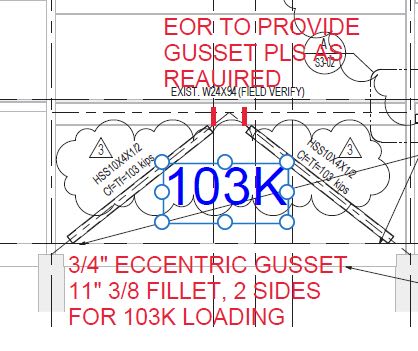Nitesh Sadashiva
Civil/Environmental
Hello all,
This seems to be pretty basic. But I always had this doubt while designing chevron brace connections. Usually the forces in chevron braces will be indicated with +/-. So the chevron braces can be either in tension or compression. While designing connections, we will consider all possible cases such as both braces in tension, both braces in compression, one in tension and other in compression. Considering both chevron braces in tension or compression will result in heavier connection. Is it correct to consider both braces in tension or compression? I believe on should be in tension while other brace will be in compression. I appreciate if you can clarify this.
This seems to be pretty basic. But I always had this doubt while designing chevron brace connections. Usually the forces in chevron braces will be indicated with +/-. So the chevron braces can be either in tension or compression. While designing connections, we will consider all possible cases such as both braces in tension, both braces in compression, one in tension and other in compression. Considering both chevron braces in tension or compression will result in heavier connection. Is it correct to consider both braces in tension or compression? I believe on should be in tension while other brace will be in compression. I appreciate if you can clarify this.


![[rednose] [rednose] [rednose]](/data/assets/smilies/rednose.gif)